- +30 211 7107433
- info@amoratistravel.com
- 6 Sardeon Str, Nea Smyrni, 17121 Greece
Every educational school trip and tour we operate is designed to match your curriculum and meet your learning objectives.
One of the oldest cities of Europe, with a history spanning 3,400 years, a school classics tour to Athens, Greece, will open your students' eyes to a fascinating ancient world.
Two and a half thousand years ago Athens laid the foundations of Europe's civilisation and fleshed out the principles of its democracy The Acropolis is a holy flat-topped rock, which rises 150m above sea level and was the seat of the supreme court of ancient Athens. The most popular time to visit the Acropolis is in the evening when you can watch the spectacular sunset over the city’s ancient monuments. The largest temple in Greece also stands in Athens 'The Temple of Zeus' this amazing ancient structure made from marble consisted of 104 corinthian columns when it was originally built, now only 15 remain. Take a look around the archaeological museum and view some amazing ancient statues, pottery, jewellery and weapons. A visit to this exciting city will throw the cultural and historical achievements of Greece into sharp relief.
Arrival to Heraklion Airport
Transfer to the hotel in Heraklion and check-in
Tour brief to the school leader by our rep
Dinner at hotel and overnight
Our rep will meet you at the exit gate to assist you with the coach transfer.
Breakfast
Visit the legendary Palace of Knossos, the setting where Theseus slayed the Minotaur.
Afternoon visit of the Heraklion Archaeological Museum, one of the most important museum with exhibits spanning from 7000 B.C.
Evening meal
The Palace of Knossos according to the myth is designed by Daedalos.
Breakfast
First stop at Gortys, a once flourishing Roman town and home to the "Code of Gortyn"
On to The Phaestos Palace, the largest of the Cretan Palaces and a fine example of Minoan architecture
Evening meal
Breakfast
Visit of the Minoan Palace at Malia
Visit the spectacular scenery of the Lasithi Plateau
Enter the Diktaion Cave the birthplace of Zeus
Evening meal
Breakfast
Explore the eastern part of Crete
Visit the fortress-monastery of Toplou
Continue to Kato Zakros, where you will see the Minoan Palace and the Gorge of the dead
Evening meal
Breakfast
Morning at leisure at Heraklion
Transfer to Heraklion airport for your return flight home
Our rep will wait for you for airport assistance
Departure
For those wanting to combine education and leisure, a full day of hiking through the majestic Samaria Gorge is planned for you. Starting early morning and reaching the Peak of Omalos Mountain, you will enter the gorge and walk 13 kilometers full of unique scenery. The end of your walk will find you at the little village of Agia Roumeli by the seaside. Then you will get transferred to Chora Sfakion by ferry before returning to your hotel. Overnight at Chania.

The Parthenon, dedicated by the Athenians to Goddess Athena is the most magnificent creation of Athenian democracy at the height of its power. It is also the finest monument on the Acropolis in terms of both conception and execution. Built between 447 and 438 BC, was designed by architects Iktinos and Kallikrates, while the sculptor Pheidias supervised the entire building program and conceived the temple's sculptural decoration and chryselephantine (gold and ivory made) statue of Athena.
The Ancient Agora of Athens is a flat area defined by the Sacred Rock of the Acropolis and the hill of Areopagus in the south and the hill of Kolonos Agoraios in the west. It was the heart of ancient Athens, the focus of political, commercial, administrative and social activity, the religious and cultural centre, and the seat of justice. Overlooking the Agora from the hill to the west is the Temple of Hephaistos and Athena (second half of 5th cent. BC), popularly known as "Theseion".
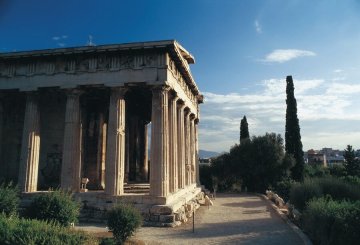
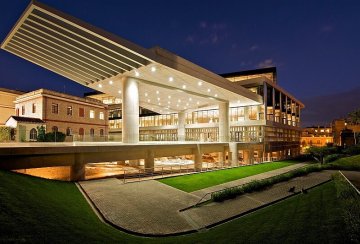
The Acropolis Museum is focused on the findings of the archaeological site of the Acropolis of Athens. The museum was built to house every artifact found on the rock and on its feet, from the Greek Bronze Age to Roman and Byzantine Greece. It also lies on the archaeological site of Makrygianni and the ruins of a part Roman and early Byzantine Athens.
The National Archaeological Museum is the largest museum in Greece and one of the world's great museums. Its abundant collections, with more than 20,000 exhibits, provide a panorama of Greek civilization from the beginnings of Prehistory to Late Antiquity. It welcomes thousands of visitors each year. Besides displaying its own treasures, it organizes temporary exhibitions and lends artefacts to exhibitions both in Greece and abroad.
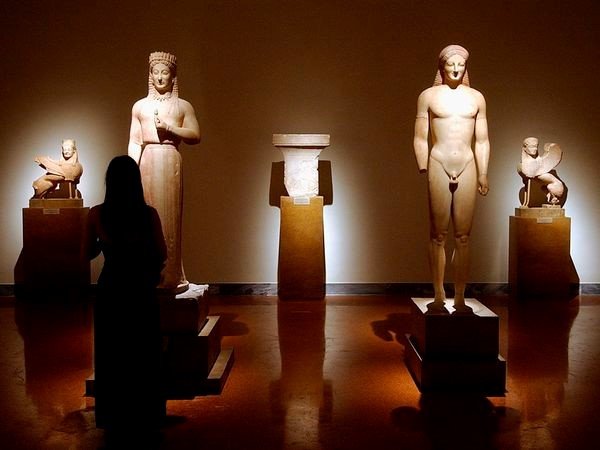
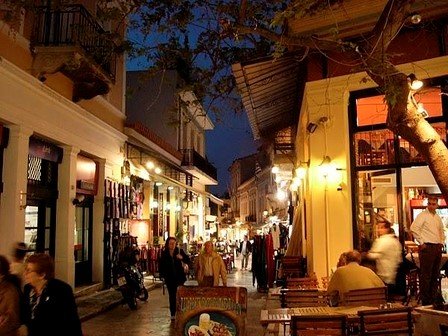
Plaka is the old historical neighborhood of Athens, clustered around the northern and eastern slopes of the Acropolis, incorporating labyrinthine streets and neoclassical architecture. Plaka is built on top of the residential areas of the ancient town of Athens. It is known as the "Neighborhood of the Gods" due to its proximity to the Acropolis and its many archaeological sites.
The Odeon of Herodes Atticus is a stone theatre structure located on the southwest slope of the Acropolis of Athens. It was built in 161 AD by the Athenian magnate Herodes Atticus in memory of his wife, Aspasia Annia Regilla. It was used as a venue for music concerts with a capacity of 5,000. It lasted intact until it was destroyed and turned into a ruin. Today the theatre opens during the summer for concerts and performances.
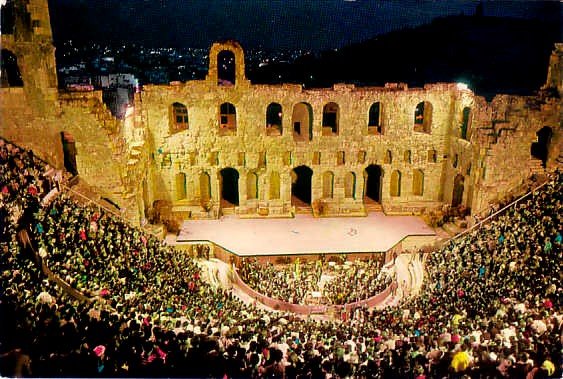
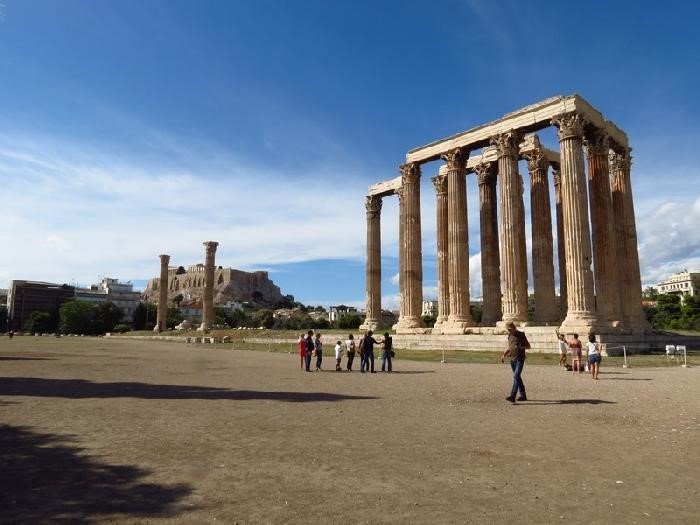
The Temple of Olympian Zeus also known as the Olympieion or Columns of the Olympian Zeus, is a colossal ruined temple in the centre of the Greek capital Athens that was dedicated to Zeus, king of the Olympian gods. Construction began in the 6th century BC during the rule of the Athenian tyrants, who envisaged building the greatest temple in the ancient world, but it was not completed until the reign of the Roman Emperor Hadrian in the 2nd century AD some 638 years after the project had begun. Fifteen columns remain standing today and a sixteenth column lies on the ground where it fell during a storm in 1852.
Cape Sounion, the sacred point of the Ancient Greece is a promontory located 69 kilometres south-southeast of Athens, at the southernmost tip of the Attica peninsula in Greece. Cape Sounion is noted as the site of ruins of an ancient Greek Temple of Poseidon, the god of the sea in classical mythology. Also famous for its beautiful sunset and the great views to the Aegean Sea. Try also to find the spot where Aegeus, king of Athens, leapt to his death off the cliff, thus giving his name to the Aegean Sea.
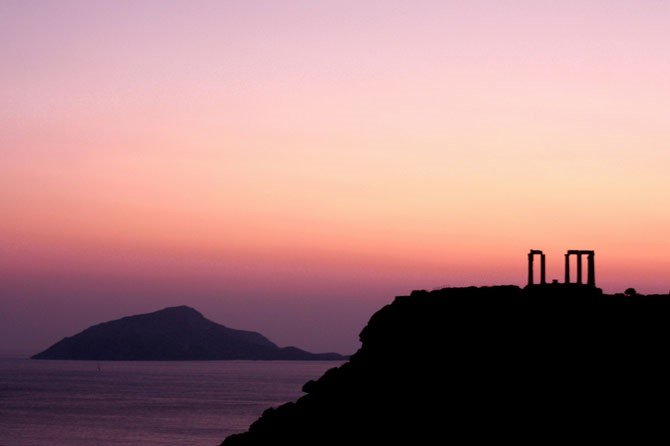
Copyright © 2017 Amoratis Travel.com. All rights reserved.
Last updated